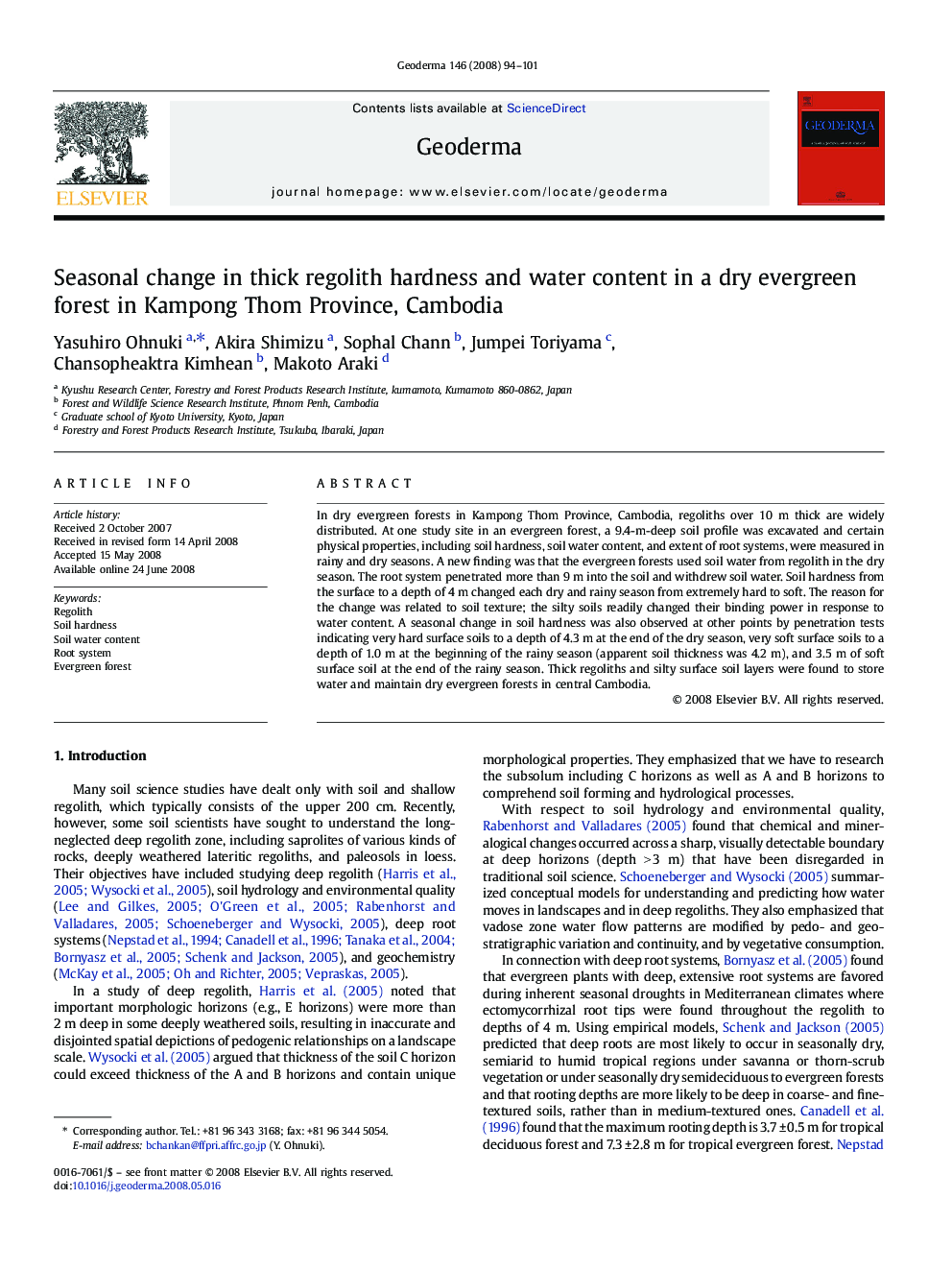| Article ID | Journal | Published Year | Pages | File Type |
|---|---|---|---|---|
| 4575039 | Geoderma | 2008 | 8 Pages |
In dry evergreen forests in Kampong Thom Province, Cambodia, regoliths over 10 m thick are widely distributed. At one study site in an evergreen forest, a 9.4-m-deep soil profile was excavated and certain physical properties, including soil hardness, soil water content, and extent of root systems, were measured in rainy and dry seasons. A new finding was that the evergreen forests used soil water from regolith in the dry season. The root system penetrated more than 9 m into the soil and withdrew soil water. Soil hardness from the surface to a depth of 4 m changed each dry and rainy season from extremely hard to soft. The reason for the change was related to soil texture; the silty soils readily changed their binding power in response to water content. A seasonal change in soil hardness was also observed at other points by penetration tests indicating very hard surface soils to a depth of 4.3 m at the end of the dry season, very soft surface soils to a depth of 1.0 m at the beginning of the rainy season (apparent soil thickness was 4.2 m), and 3.5 m of soft surface soil at the end of the rainy season. Thick regoliths and silty surface soil layers were found to store water and maintain dry evergreen forests in central Cambodia.
